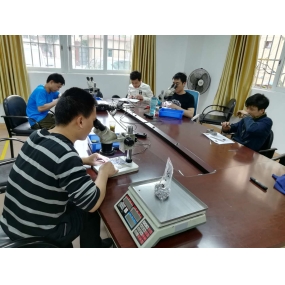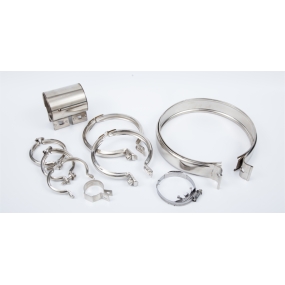Ever found yourself staring at a non-standard part that just doesn't fit right? 😫 That frustrating moment when your custom component comes back from machining with dimensions slightly off - we've all been there. For procurement managers and engineers dealing with custom parts, machining accuracy isn't just technical jargon; it's what stands between project success and costly delays.
Why Non-Standard Parts Are Trickier to Machine Accurately
Non-standard parts are like snowflakes - each one unique. Unlike mass-produced components where you can perfect the process through repetition, custom parts present fresh challenges every time. The complex geometries, unusual materials, and one-off nature mean you're basically reinventing the wheel with each project.
But here's the thing: while non-standard parts are inherently more challenging, this doesn't mean you have to settle for mediocre results. The key lies in understanding what factors actually impact accuracy and how to control them.

What Really Affects CNC Accuracy for Custom Parts?
Let's break down the usual suspects that mess with your part dimensions:
Machine condition matters more than you think - an older CNC machine might still run, but its precision could be slowly degrading. Regular maintenance isn't just about preventing breakdowns; it's about maintaining those tight tolerances.
Tool wear happens gradually - that cutting tool that worked perfectly for the first ten parts might be slowly losing its edge. The scary part? You might not notice until several parts are already out of spec.
Material variability can surprise you - different material batches, even from the same supplier, can behave slightly differently during machining. What worked last time might need adjustments this time.

Practical Steps to Better Accuracy Control
So how do you actually keep things precise? Here's what I've found works through trial and error:
Communication is your secret weapon - the more your machining partner understands your application, the better they can anticipate issues. Don't just send the CAD file; explain how the part will be used.
Ask about their measurement protocol - do they check parts at regular intervals? What measuring tools do they use? A shop that takes measurement seriously is usually one that delivers consistent accuracy.
Consider starting with a prototype batch - for larger orders, machining a small batch first lets you verify the process before committing to full production. It might add a bit of time upfront but can save you from bigger headaches later.
When Good Parts Go Bad: Dealing with Accuracy Issues
Even with the best planning, sometimes parts come back not quite right. Here's how to handle it:
First, don't panic - accuracy issues are usually fixable. The important thing is to identify exactly where and why the dimensions are off.
Work with your supplier to troubleshoot - a good machining partner will want to understand what went wrong almost as much as you do. Together, you can often pinpoint whether it's a programming issue, tooling problem, or material variation.
From my experience, the shops that are most transparent about their mistakes often turn out to be the most reliable long-term partners. They're the ones learning and improving constantly.

Beyond the Numbers: What Accuracy Really Means for Your Project
We tend to focus on those tolerance numbers on the drawing, but there's more to accuracy than meets the eye. A part can be dimensionally perfect but still not function properly if the surface finish is wrong or there are residual stresses.
This is where the art of machining comes in. An experienced machinist understands that sometimes you need to go beyond the strict numbers and consider how the part will actually work in the real world.
Interestingly, I've found that the most accurate shops aren't necessarily the ones with the newest equipment, but rather those with the most experienced operators who know how to get the best out of their machines.
Looking for reliable CNC Machining for your non-standard parts? Our technical team specializes in tackling unique challenges and maintaining tight tolerances. 👉 [Contact our online service team] for a personalized solution that addresses your specific accuracy requirements.


 Spanish
Spanish Arabic
Arabic French
French Portuguese
Portuguese Belarusian
Belarusian Japanese
Japanese Russian
Russian Malay
Malay Icelandic
Icelandic Bulgarian
Bulgarian Azerbaijani
Azerbaijani Estonian
Estonian Irish
Irish Polish
Polish Persian
Persian Boolean
Boolean Danish
Danish German
German Filipino
Filipino Finnish
Finnish Korean
Korean Dutch
Dutch Galician
Galician Catalan
Catalan Czech
Czech Croatian
Croatian Latin
Latin Latvian
Latvian Romanian
Romanian Maltese
Maltese Macedonian
Macedonian Norwegian
Norwegian Swedish
Swedish Serbian
Serbian Slovak
Slovak Slovenian
Slovenian Swahili
Swahili Thai
Thai Turkish
Turkish Welsh
Welsh Urdu
Urdu Ukrainian
Ukrainian Greek
Greek Hungarian
Hungarian Italian
Italian Yiddish
Yiddish Indonesian
Indonesian Vietnamese
Vietnamese Haitian Creole
Haitian Creole Spanish Basque
Spanish Basque











